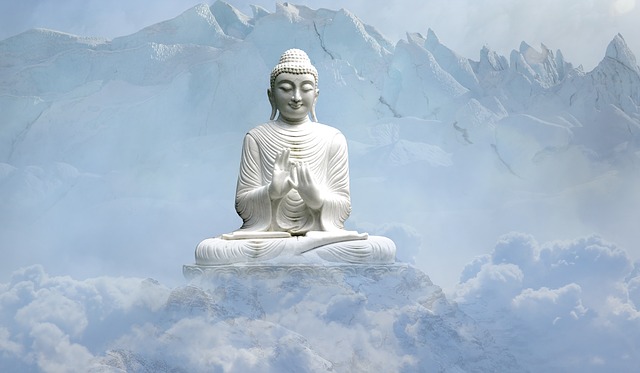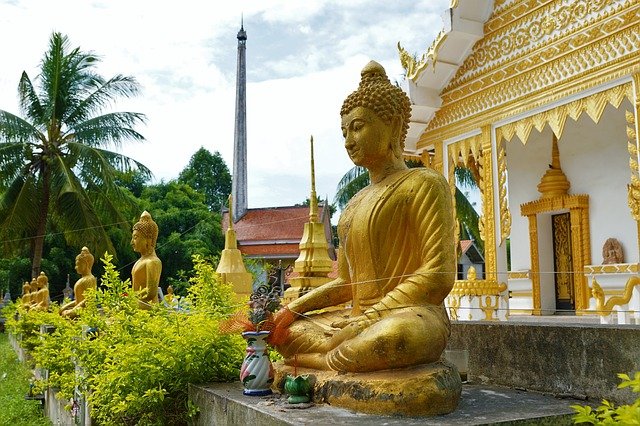
Meditation in Buddhism has a few slightly different methods, but they are all known as bhavana to Buddhists. An ancient practice, bhavana is based in part of the instruction of Gautama Buddha, who lived more than 2500 years ago and also in many older types of yogic practice. But the word meditation is not a perfect translation of bhavana which translates more accurately to "mental culture or mental development."
Bhāvanā (Pali; Sanskrit, also bhāvana) literally means "development" or "cultivating" or "producing" in the sense of "calling into existence." It is an important concept in Buddhist praxis (Patipatti). ... When used on its own bhavana signifies contemplation and 'spiritual cultivation' generally. ~Wikipedia
So, while mindfulness in the popular sense of the word is a part of Buddhism it is just a part of a multi-faceted path of Buddhist practice. The Buddhist word bhavana is "mental culture". It's aim is cleansing the mind of disturbances and impurities such as lust, indolence, hatred, ill-will, worries, restlessness and doubt. While it aims to cultivate such qualities as concentration, awareness, intelligence, will, energy, the analytical faculty, confidence, joy, and tranquility. Which with dedication will finally lead the practitioner to the attainment of the highest wisdom, the wisdom that sees the nature of things as they are and achieves realization of ultimate truth known as nirvana.
Meditation is Part of Our Natural Potential
While this sounds very mystical it is very natural. Bhavana or Buddhist meditation is not primarily a stress reduction technique or relaxation exercise. However, these things usually occur as a naturally as a result of practice. Neither is it about getting blissed out, out-of-body experiences or having visions. People that get hooked on these types of experiences do not understand that this is known as having delusions. If these things occur it is best to put them aside and continue on with our practice. The arising of insight and wisdom is pure and is nothing like having visions. Whether or not visions occur for more advanced meditators is not the scope of this article as it is not relevant to the beginning meditator nor is it relevant to realizing enlightenment.

There are slightly different approaches to bhavana and sometimes broken down into two types samatha and and the more recognizable to most vipassana. Samatha is said to be the development of mental concentration while vipassana is said to be the development of insight. From my experience I would describe samatha as more of a technique to gradually become skillful at sitting and vipassana is a bit more advanced and intentional.
In Zen bhavana is called zazen. Koan study is often associated with vipassana, while shikantaza or "just sitting" appears to be like samatha practice. Zen Buddhists do not differentiate the two and instead understand it that samatha naturally comes before vipassana when becoming skilled in the practice of meditation therefore the intention and contextual differences are not necessary. Either way, both roads converge at some point on the way to the top of the mountain.
How To Begin Practicing Buddhist Meditation
Human beings are exceptional in the natural world that we have the capacity to develop our minds in this way. No other sentient beings on Earth can do this. So let's get to fulfilling our potential.
Bhavana instruction is found many times throughout the teachings of The Buddha. Posture is important and is referred to here in The Dhammapada in a chapter called "The Mind":
Knowing this body like a fragile clay pot, and establishing this mind like a fortress, conquer Māra with the sword of wisdom. Then protect what has been won, but cling to nothing.

- Choose a suitable, congenial place and then sit. If you can cross legged is best, if not on the edge of a chair, couch or bed is fine.
- The body should be erect and this is the most important part - no slouching of back, neck or head.
- Your hands may be forming a mudra as shown here (best) or your hands may rest face down on knees
- Keep your eyes gently closed or if this is uncomfortable slightly open softly looking ahead a few feet (how I started).
- Rest your tongue against the upper teeth. This is so you don't get distracted by continually having to swallow saliva.
In this mudra, the seated Buddha is seen with hands placed on his lap, right hand over left, palms facing upward and fingers stretched in a relaxed pose. The right hand represents enlightenment, while the left is the illusory nature of existence. Alternatively, this positioning of the hands signifies skilful action (or “method”) as arising from a state of inner calm.
Sometimes, this mudra is displayed with both thumb tips touching each other, forming a triangle. This figure represents the Three Jewels of Buddhism – the Buddha, the Sangha and the Good Law (Dharma). The coming together of the thumb tips also indicates the union of two psychic channels in the body, as represented by the male and female principles that exist in every sentient being. ~Buddhagroove
Here we consider the Buddha's instruction again. We are holding the fragile clay pot, our mind, so we have to handle it carefully and not fidget about and keep moving. If we imagine such a real, clay pot we know that we would place it somewhere safe where it would not be broken and we would not keep moving it from place to place.
We consider the second admonition that with the Mara the sword of wisdom we protect our mind. We are protecting from the enemies we discussed earlier in this essay: lustful desires, indolence, hatred, ill-will, worries, restlessness and doubt as well as laziness and sleepiness. This aim requires a calm and settled mind. Stay in the present and become more and more mindful. Keep returning to this moment-to-moment observation. Observe this natural and peaceful breath; give your full attention to your breath.

At first, start with only two minutes. Each day add another minute then when you get up to ten minutes do that for a week and each week add two minutes or so. Before you know it you will be up to 30 minutes! I stayed at 20 minutes for a month before moving onto 25 minutes. Now 30 minutes is very easy for me and I can't imagine a day without the nourishment I receive from my bhavana practice.
Wisdom arises only in a quiet mind. Start slowly and soon you will begin to reap the benefits of a mind that is becoming more peaceful and developed and cultivating beautiful qualities and equanimity.
What do you think?
~

@soulsistashakti is a musical artist and writer based in NYC as well as a practitioner of Buddhist teachings. You can check out my music on my FB artist page at https://www.facebook.com/soulsistashakti
Images pixabay and unsplash
Recent Posts
Meditation and Buddhism - The Fascinating and Awesome Power of Om Mani Padme Hum
The Magic of Flow and Why Hacks Are Bunk - Part 2
Buddhism: Trauma, Psychedelics and Meditation
Buddhism: What is Karma?
Buddhism: Karma and The Family - Part 1
Buddhism: What is Karma?
Buddhism: Karma and the Family - Part 2
Buddhism: Karma and the Family - Part 3
Zen Mind and the Mind of Bruce Lee
this is a nice way to get a stable and healthy mind by adding time each day/week to your practice. been doing this myself for 3 weeks now and i dont want to stop
Downvoting a post can decrease pending rewards and make it less visible. Common reasons:
Submit
It does add up with consistent practice, doesn't it? 😀
Downvoting a post can decrease pending rewards and make it less visible. Common reasons:
Submit
Seeing the nature of things as they are is a beautiful thing to do!
Downvoting a post can decrease pending rewards and make it less visible. Common reasons:
Submit
It's beautiful and it's also necessary to weed out delusions.
Downvoting a post can decrease pending rewards and make it less visible. Common reasons:
Submit
aaah yes
Downvoting a post can decrease pending rewards and make it less visible. Common reasons:
Submit